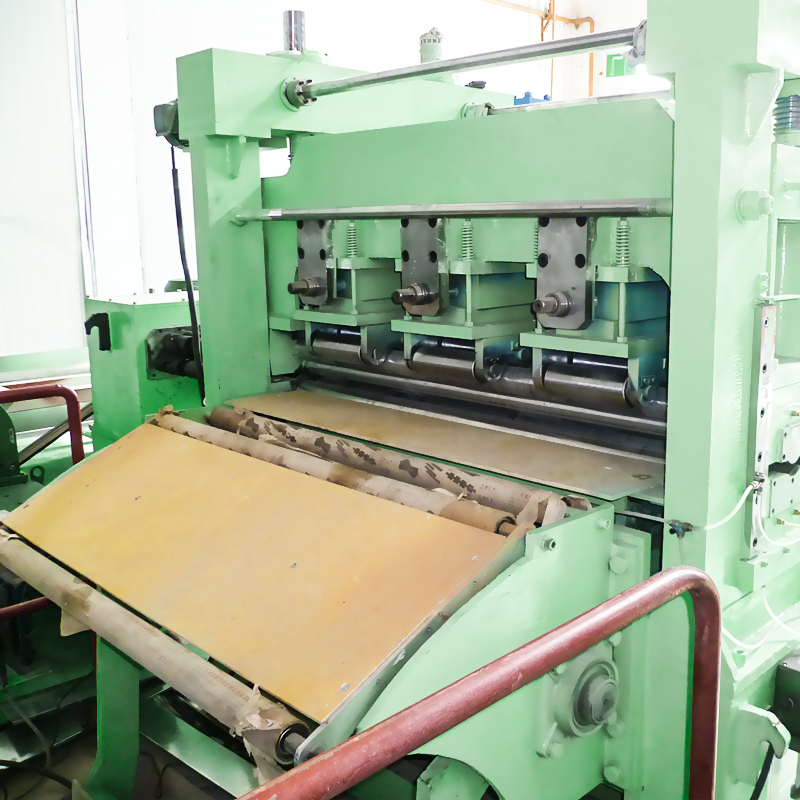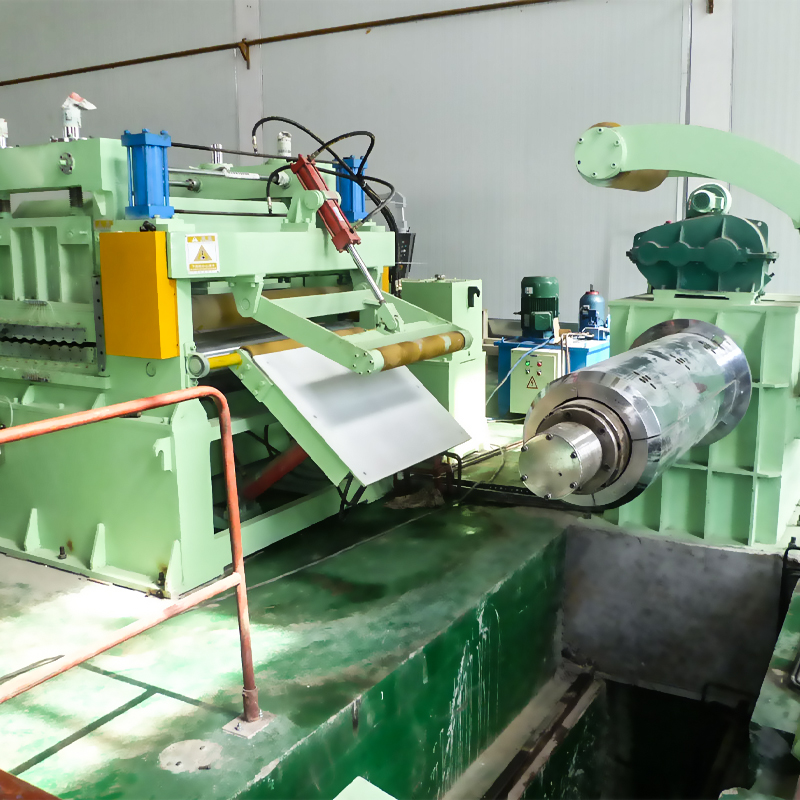Введение
The проектирование оснастки в валковой машине имеет решающее значение для производство высококачественных металлических профилей с точностью и эффективностью. Без надлежащая оснасткаПроизводители сталкиваются с такими проблемами, как несоосность, излишние отходы материала и несоответствие размеров профиля.
Итак, как вы разработка эффективной оснастки для валковой формовки который обеспечивает бесперебойное производство, минимум отходов и максимальная точность?
В этом руководстве мы рассмотрим:
✅ Ключевые принципы проектирования оснастки для валковой формовки
✅ Факторы, влияющие на производительность инструмента
✅ Передовые методы оптимизации срока службы инструмента
✅ Общие проблемы проектирования оснастки и их решение
✅ Как выбрать правильные материалы для оснастки
Давайте изучим инженерные основы проектирования оснастки для валковой формовки и как Повышение эффективности и точности в 2025 году!
Ключевые принципы проектирования оснастки для валковой формовки
Инструментарий для прокатки состоит из прецизионные ролики которые постепенно превращают металлические листы в сложные профили. Процесс проектирования включает в себя несколько ключевых принципов обеспечить высокоскоростное производство без дефектов.
1. Правильная конструкция роликового прохода
- Каждая роликовая станция должна постепенно формируют профиль без чрезмерного напряжения материала.
- Прогрессивное формирование предотвращает растрескивание металла и проблемы несоосности.
2. Оптимизация материального потока
- Материал должен плавно протекать через ролики без изгиб или смятие.
- Правильно контроль кромки обеспечивает постоянная ширина и толщина профиля.
3. Минимизация износа инструмента и уменьшение трения
- Ролики из закаленной стали уменьшают износ и продлевают срок службы инструмента.
- Системы смазки предотвращают трение, уменьшая потребление энергии и деградация роликов.
4. Контроль зазоров и допусков
- Зазор между роликами должен совпадать толщина металла предотвращать перевыполнение или недовыполнение.
- Точные допуски обеспечить постоянная точность профиля.
5. Распределение и компенсация напряжений
- Неравномерное напряжение при формовании приводит к Искривление профиля и растрескивание кромок.
- Сбалансированное распределение напряжений через ролики обеспечивает плавная формовка.
Совет профессионала: Правильная конструкция оснастки позволяет повысить точность формовки валков на 30% и сократить отходы материала на 20%!
Факторы, влияющие на производительность инструмента для валковой формовки
Несколько факторов влияют на производительность и долговечность оснастки для валковой формовки. Устранение этих факторов может оптимизация производства и минимизация времени простоя.
1. Выбор инструментального материала
- Инструменты из быстрорежущей стали (HSS) и твердого сплава служат дольше, чем стандартные стальные.
- Ролики с хромированным или азотированным покрытием уменьшают трение и продлевают срок службы.
2. Выравнивание и калибровка роликов
- Неправильно расположенные ролики вызывают искажение профиля и чрезмерный износ.
- Регулярная калибровка обеспечивает постоянная точность профиля.
3. Системы смазки и охлаждения
- Правильная смазка уменьшает накопление тепла и трение.
- Системы охлаждения предотвратить тепловое расширение роликов.
4. Контроль скорости и давления при формовке валков
- Высокоскоростная формовка без надлежащего контроля давления вызывает растрескивание металла.
- Регулировка скорости формования обеспечивает плавную подачу материала и равномерное формование.
5. Сложность профиля и углы изгиба
- Сложные профили требуют больше проходов на роликах чтобы предотвратить чрезмерный стресс.
- Углы постепенного изгиба уменьшить дефекты профиля и расщепление.
Совет профессионала: Использование высококачественных материалов для оснастки позволяет увеличить срок службы роликов до 50%!
Лучшие практики по оптимизации срока службы инструмента
Надлежащее обслуживание инструмента предотвращает преждевременный износ и обеспечивает долговременную эффективность. Следуйте этим рекомендациям, чтобы максимальная долговечность оснастки.
1. Используйте закаленные инструментальные материалы
✅ Ролики из стали с твердосплавным или азотированным покрытием служат дольше, чем стандартные ролики.
✅ Инструменты из быстрорежущей стали (HSS) Устойчив к износу и сохраняет острые края.
2. Внедрить профилактическое обслуживание
✅ Регулярный осмотр выравнивание роликов и износ поверхности.
✅ Применить высококачественные смазочные материалы сократить Трение и перегрев.
3. Оптимизация давления и скорости формования
✅ Чрезмерное давление вызывает износ оснастки и растрескивание материала.
✅ Регулировка скорости формования в зависимости от толщины материала и сложности профиля.
4. Следите за чистотой и отсутствием мусора в инструментах
✅ Грязь и мусор увеличивают трение и снижают точность формовки.
✅ Регулярная уборка предотвращает появление царапин на поверхности и повреждение валика.
5. Храните инструменты в контролируемой среде
✅ Влажность и перепады температуры причина коррозия оснастки.
✅ Храните ролики в сухие, контролируемые климатические условия для предотвращения ржавчины.
Совет профессионала: Хорошо обслуживаемая система оснастки может прослужить в 3 раза дольше, чем необслуживаемая!

Общие проблемы и решения, связанные с оснасткой для рулонной формовки
Даже с правильное проектирование и обслуживаниеПри этом могут возникнуть проблемы с инструментами. В приведенной ниже таблице указаны распространенные проблемы с инструментами и способы их устранения.
| Выпуск | Причина | Решение |
|---|---|---|
| Искажение профиля | Неправильная регулировка роликов, чрезмерное давление при формовке | Отрегулируйте положение роликов, уменьшите давление |
| Чрезмерный износ роликов | Плохая смазка, некачественный материал для оснастки | Применяйте надлежащие смазки, используйте ролики из закаленной стали |
| Растрескивание материала | Острые углы изгиба, чрезмерная скорость формовки | Снизить скорость формования, увеличить количество проходов |
| Поверхностные царапины на профилях | Грязные ролики, высокое трение | Регулярно очищайте ролики, наносите смазку |
| Неравномерная толщина профиля | Неправильные настройки зазора между роликами | Регулировка расстояния между роликами в соответствии с толщиной материала |
Совет профессионала: 80% дефектов профиля вызваны неправильным выравниванием - регулярная калибровка обеспечивает идеальное формирование!
Выбор правильного инструментального материала для рулонных формовочных машин
The материал для оснастки играет решающую роль в срок службы роликов, качество формовки и затраты на обслуживание. Ниже приведено сравнение часто используемых материалов для оснастки.
| Инструментальный материал | Долговечность | Сопротивление трению | Расходы | Лучшее для |
|---|---|---|---|---|
| Высокоскоростная сталь (HSS) | ⭐⭐⭐⭐ | ⭐⭐⭐ | 💰💰💰 | Общая валковая формовка |
| Сталь с твердосплавным покрытием | ⭐⭐⭐⭐⭐ | ⭐⭐⭐⭐⭐ | 💰💰💰💰 | Сверхмощное, крупносерийное производство |
| Хромированные ролики | ⭐⭐⭐ | ⭐⭐⭐⭐ | 💰💰 | Коррозионная стойкость |
| Азотированные Сталь | ⭐⭐⭐⭐ | ⭐⭐⭐ | 💰💰💰 | Высокоточное формование |
Совет профессионала: Ролики с твердосплавным покрытием обеспечивают наилучшую износостойкость и самый долгий срок службы для крупносерийного производства!
Передовые методы оптимизации конструкции оснастки для валковой формовки
Оптимизация конструкции оснастки для валковой формовки требует Точное проектирование, передовой выбор материалов и интеграция передовых технологий. Ниже приведены передовые методы что повышение эффективности, долговечности и точности инструмента.
1. Многоступенчатая конструкция прохода валков для сложных профилей
- Постепенное формирование в несколько этапов предотвращает растрескивание материала и концентрация напряжений.
- Оптимизированная геометрия роликов обеспечивает плавный поток материала и равномерное распределение напряжения.
- Уменьшает эффект пружины контролируя дополнительные углы изгиба.
2. Моделирование CAD/CAM для оптимизации проектирования оснастки
- Автоматизированное проектирование (CAD) помогает визуализация процесса формовки до начала производства.
- Анализ методом конечных элементов (FEA) предсказывает поведение материала, уменьшая количество проб и ошибок при настройке.
- Обеспечивает идеальное профилирование роликов и устранение недостатков конструкции.
3. Высокоточная обработка с ЧПУ для изготовления инструментов
- Обработка с ЧПУ обеспечивает стабильные размеры роликов и жесткие допуски.
- Уменьшает человеческий фактор при изготовлении ручной оснастки.
- Включает повторяемость в массовом производстве валковых штампов и роликов.
Совет профессионала: Усовершенствованное моделирование в САПР сокращает время настройки инструмента на 50% и повышает точность формовки!
Как повысить долговечность и уменьшить износ инструмента
Износ инструмента влияет на качество продукции, увеличивает затраты на обслуживание и снижает эффективность производства. Вот как Увеличение срока службы инструмента и снижение износа.
1. Обработка поверхностного упрочнения
- Азотирование и хромирование увеличить Твердость и износостойкость роликов.
- Ролики с твердосплавным покрытием уменьшить Трение и повреждение поверхности.
2. Правильная смазка и системы охлаждения
- Автоматизированные системы смазки предотвратить Повышение температуры и износ роликов.
- Циркуляция охлаждающей жидкости поддерживает стабильные температуры формования.
3. Регулярный осмотр и обслуживание инструментов
- Проведение плановые проверки обнаружить Ранние признаки износа и смещения.
- Заменить поврежденные ролики до того, как они повлияют на точность профиля.
Совет профессионала: Использование роликов из азотированной стали позволяет увеличить срок службы инструмента до 40%!
Как сократить отходы материалов при изготовлении оснастки для роликовой формовки
Увеличение количества отходов материалов затраты на производство и снижает эффективность. Вот как Минимизация количества брака и максимальный выход продукции.
1. Оптимизация зазора и выравнивания роликов
- Неправильное выравнивание роликов вызывает искажение профиля и растрескивание кромок.
- Отрегулируйте зазор между роликами в зависимости от толщины материала.
2. Используйте обнаружение дефектов на основе искусственного интеллекта
- Камеры с искусственным интеллектом следят за точность профиля в режиме реального времени.
- Обнаруживает раннее формирование дефектовСокращение отходов материалов.
3. Внедрение прецизионной резки с ЧПУ
- Системы резки с ЧПУ обеспечивают точная длина профиля.
- Уменьшает перерасход материалов и образование брака.
Совет профессионала: Оптимизация центровки инструмента позволяет сократить отходы материала до 20%!

Выбор правильного покрытия для оснастки роликовой формовки
The правильное покрытие инструмента улучшает износостойкость, снижение трения и повышение точности формовки. Ниже представлено сравнение популярные покрытия для оснастки для прокатки.
| Тип покрытия | Износостойкость | Снижение трения | Лучшее для |
|---|---|---|---|
| Азотирование | ⭐⭐⭐⭐ | ⭐⭐⭐ | Общая валковая формовка |
| Хромирование | ⭐⭐⭐ | ⭐⭐⭐⭐ | Защита от коррозии |
| Твердосплавное покрытие | ⭐⭐⭐⭐⭐ | ⭐⭐⭐⭐⭐ | Крупносерийное производство |
| Нитрид титана (TiN) | ⭐⭐⭐⭐ | ⭐⭐⭐⭐ | Чрезвычайная износостойкость |
Совет профессионала: Инструмент с твердосплавным покрытием служит на 50% дольше, чем стандартные стальные ролики!
Распространенные ошибки при проектировании оснастки для роликовой формовки и как их избежать
Даже опытные производители могут допускать ошибки при проектировании оснастки которые приводят к неэффективность и недостатки. Вот как избегать их.
| Ошибка | Вызванная проблема | Решение |
|---|---|---|
| Недостаточное количество роликовых пассов | Причины чрезмерное напряжение материала | Увеличение числа проходов формования |
| Неправильный зазор между роликами | Приводит к Неравномерная толщина и смещение | Регулировка зазора в зависимости от толщины материала |
| Острые углы изгиба | Причины растрескивание материала | Используйте углы постепенного изгиба |
| Низкокачественный инструментальный материал | Увеличивает изнашивается и сокращает срок службы | Используйте закаленная сталь или твердосплавные покрытия |
| Отсутствие смазки | Производит чрезмерное трение и повреждение роликов | Установите автоматизированные системы смазки |
Совет профессионала: Правильные настройки зазора роликов могут повысить точность формовки на 30%!
ВОПРОСЫ И ОТВЕТЫ: Проектирование и оптимизация оснастки для роликовой формовки
1. Какой материал лучше всего подходит для оснастки для валковой формовки?
- Сталь с твердосплавным покрытием и азотированная сталь обеспечивают наилучшую прочность и износостойкость.
2. Как часто следует заменять оснастку для валковой формовки?
- Это зависит от качество материалов, объем производства и техническое обслуживание. Качественная оснастка может служить долго более 5 лет при надлежащем уходе.
3. Что вызывает чрезмерный износ роликов в валковых машинах?
- Плохая смазка, высокое трение и неправильная центровка роликов вносить вклад в преждевременный износ.
4. Как предотвратить растрескивание материала при роликовой формовке?
- Используйте углы постепенного изгиба, оптимизация скорости формования, и уменьшение давления формования.
5. Где можно купить высококачественную оснастку для валковой формовки?
Для изготовление на заказ оборудования для формовки валков, посетите WUXI SUNWAY MACHINERY CO., LTD..
Заключительные размышления
The правильное проектирование оснастки важно для эффективная, высокоточная валковая формовка. Выбирая высококачественные материалы, оптимизация центровки роликов и проведение профилактического обслуживанияпроизводители могут сокращение времени простоя, повышение точности и увеличение срока службы инструментов.
WUXI SUNWAY MACHINERY CO., LTD. это ведущий мировой производитель из оборудование и оснастка для валковой формовки по индивидуальным заказам, предлагая Передовые технологии, экспертная поддержка и конкурентоспособные цены.
Хотите высококачественная вальцовочная машина? Свяжитесь с нами сегодня!
